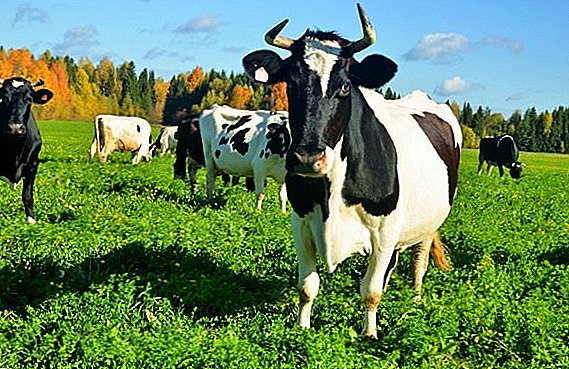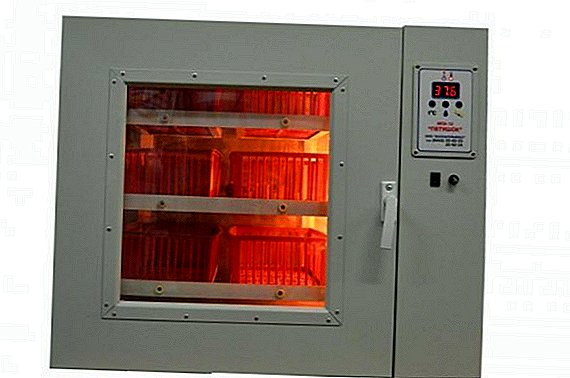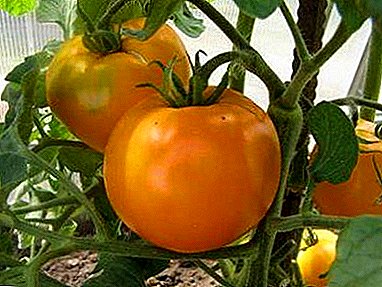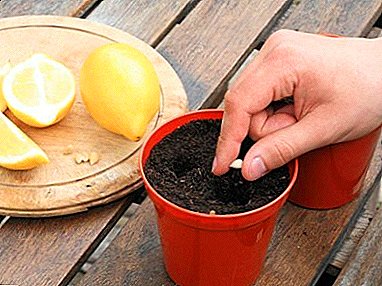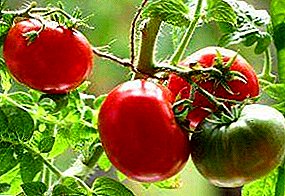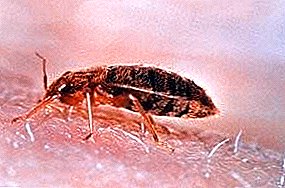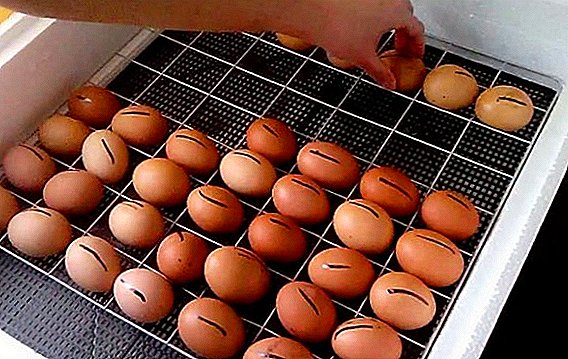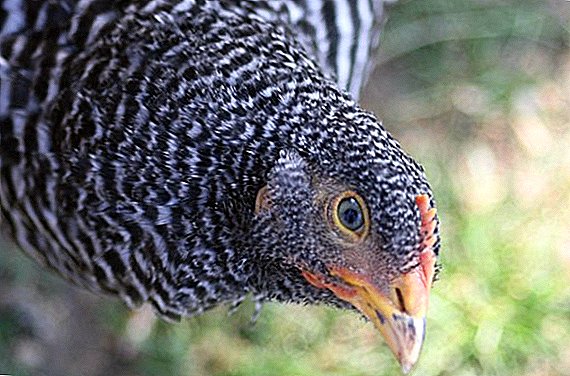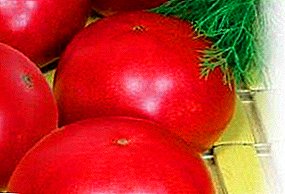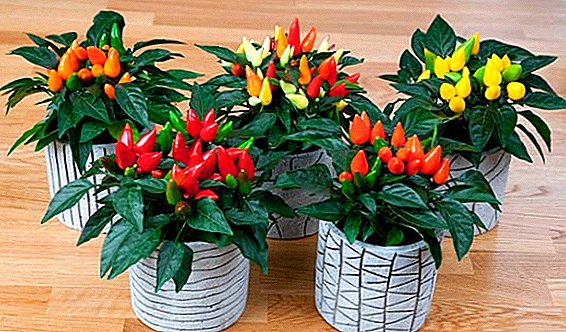 Among the numerous varietal variations of pepper, tomato or cucumber, lately, decorative crops grown at home are particularly notable. It is to such applies and pepper "Fire", which, despite its sharpness, was able to win the recognition of many housewives. Let's get acquainted with its features, rules of cultivation and requirements for care.
Among the numerous varietal variations of pepper, tomato or cucumber, lately, decorative crops grown at home are particularly notable. It is to such applies and pepper "Fire", which, despite its sharpness, was able to win the recognition of many housewives. Let's get acquainted with its features, rules of cultivation and requirements for care.
Description
Variety of pepper "Spark" was so widespread due to the efforts of the staff of the Transnistrian research Institute of agriculture, crossed the Chilean and Kenyan varieties of plants. In 2006 it was included in the state register and since then began its mass distribution throughout the Russian Federation and nearby countries.

Today, "Spark" is considered one of the most popular sharp perennial varieties of pepper. From shoots to the technical period of ripening takes from 115 to 120 days, and biological ripeness occurs after 140 days. The weight of one fruit varies from 40 to 45 grams, and its wall thickness is about 1.5 mm. In appearance - this is the usual bright red pepper.
Quite popular and such varieties of sweet pepper as: "California miracle", "Claudio F1", "Gypsy F1", "Anastasia", "Ox's ear", "Kakadu", "Bogatyr", "Soloist", "Habanero", " Swallow, Golden Miracle, Orange Miracle, Atlas.
This variety belongs to the medium early, which means that the fruits of the plant can be obtained closer to the end of summer or even early autumn, and under greenhouse conditions, their development occurs much faster. "Spark" is great for growing in the open field and in the greenhouse, and in the apartment - of course, if you can arrange all the suitable conditions for it. In a room environment, yields of 3.8 kg per square meter can be achieved, while in open soil this figure usually does not exceed 3 kg.

In height, compact pepper bushes reach 60 cm (if grown in the garden) and about 30 cm when grown in pots on a windowsill. The main advantage of the variety is its high resistance to bacteriosis.
Important! Not all cultures, called "lights", are truly representatives of this variety. In many regions, so is called any hot pepper, regardless of its origin.
Landing
Depending on the place of future growth (room conditions or open ground), there are some peculiarities of planting and caring for Ogonek pepper. Consider each of the options.
Growing up on the windowsill
When grown at home, it is advisable to start this process at the end of February, continuing until mid-March. (seeds go deeper into the substrate prepared in advance, and the plants should germinate and pass the mini-greenhouse age by the first stable heat).

Ceramic pots are ideal for sowing seeds. with a volume of at least 3-5 liters and with an opening for the release of excess water. As a substrate for planting, it is desirable to use a mixture of sand, garden soil and humus (1: 2: 1 ratio), having organized a good drainage layer before filling them (broken bricks, expanded clay or crushed stone can be used). With the annual cultivation of perennial peppers, the soil must be changed once a year, and fertilizers are applied only during transplantation (organic matter is used) and during the growing season (phosphorus-potassium compounds). The frequency of application of fertilizing - 1 time in two weeks.
You can also grow on the windowsill: tomatoes, cucumbers, dill, green onions, arugula, spinach, lettuce, iceberg lettuce.
Selecting a place for placing containers with pepper, it is recommended to pay attention to the fact that the window sill is bright and cool, because to achieve maximum fruiting it will be possible only with good lighting, supported by at least half a day. With a lack of natural light, you will have to additionally use blue-violet lamps.

Regarding temperature conditions, then the thermometer should not show less than 15 ° C, although at very high rates may turn yellow leaves and crumble off the petals of the bound buds. In a very hot time, it will be useful to additionally humidify the air and spray pepper bushes, performing the procedure daily in the evening.
Watering grown on the window sill "Spark" should be done often, but with little use of water, because oversaturation of soil moisture will adversely affect the development of the root system (it just rot). Other features care for hot pepper in room conditions.
Did you know? The first written sources confirming the use of pepper by our ancestors are the Sanskrit letters created more than 3,000 years ago. At the same time, India is considered the birthplace of the plant, despite the fact that it has long been cultivated in the territories of other tropical countries.
Outdoor cultivation
With all the possibilities of growing at home, it is often possible to find pepper "Spark" and in the open beds. However, in order to get a good result in such conditions, you will first have to grow good seedlings in a seed way. You can buy planting material both at specialized points of sale, and by self-procurement from last year’s crop.

For good seedlings in the future, experts advise planting seeds in late March or early April, using the standard scheme for pepper: 40 x 20 cm. You can also use the so-called "snail" method, which has enjoyed considerable popularity recently. According to this method, the seeding of seed material is performed in the following order:

- buying 2 mm of lining for laminate (sold at any hardware store) and folding it into a tube to imitate a snail;
- fixing the lining with threads and filling it with earth;
- filling with seeds and waiting for the first shoots;
- transplantation of sprouts (at the stage of appearance of 3-4 true leaves) into peat pots.

Seedlings are planted on open terrain when young plants already have 10-12 leaves and reach a height of 20-25 cm. Of course, 14 days before the intended transplant, young plants need to be hardened by regularly putting the pots on the balcony or the glazed terrace for 15- 20 minutes. The time of transplantation is determined by the climatic conditions of a specific area: It is best to wait for stable heat at 20-25 ° C (the most suitable temperature for pepper), although in practice many gardeners plant seedlings at lower values.
In addition to pepper in open ground, you can plant the same: tomatoes, tangerines, zucchini, dill, and eggplant.
Before moving the seedlings to a new place of growth (must be in a well-lit area with heated soil), to the bottom of previously organized holes or beds need to put fertilizer and when planting directly, it is advisable to pinch the plants to the top of the head, which will allow you to form a fairly lush bush with excellent fruiting.
As for dressings, since autumn, rotted manure is brought into the soil, and before direct planting they fertilize the soil with organic matter mixed with peat. For further fertilizer (after planting), potassium nitrate diluted in 10 liters of water can be used, or special mixtures in which nitrogen, phosphorus, potassium salt and superphosphate are present.
Watering in the summer is carried out daily, so that the earth does not dry out.
Care
After sowing seeds in pots or planting seedlings in an open area, the stage of active and constant care begins, because only then you will be able to get healthy and strong pepper.

At home
When growing the variety "Spark" on the windowsill, the following measures stand out among the main activities:
- Permanent and sufficient watering, with a focus on the season. In the first month after planting, young plants need a sufficiently large amount of the applied liquid so that the soil in the pots is always moderately moist. However, try not to pour your pepper, because waterlogging creates excellent conditions for the development of such an unpleasant illness, like "black leg".
- Creating comfortable temperature conditions when growing on a windowsill: optimally - about 20 ° C, and when cooling outside it is desirable to remove the pots with plants away from open windows ("Spark" very poorly tolerates drafts).
- Repot the plant once a year (sometimes even twice) using a larger pot and a fresh soil substrate.
- Feeding pepper with mineral complex fertilizers, with a frequency of 1 every 14 days, until the end of the summer period (using complex fertilizers, in the amount indicated on the packaging).
- Shaking the bush lightly to avoid insufficient plant pollination (you can just shake the pot lightly).
- Artificial illumination of plantings in winter time using bioluminescent lamps (the total duration of daylight should not be less than 12 hours).
Important! In addition to lighting and a sufficient amount of heat, the pepper also needs to be constantly illuminated by sunlight, and it should be uniform, falling on all parts of the bush (at least once a day the pot should be rotated 180 °).
In the open ground
When growing pepper "Fire" in the open soil, all care activities are performed almost the same, unless the plants will not need additional lighting and maintaining the temperature. In the hot season, special attention should be paid to irrigation, using warm, sun-defended water. In no case should the soil in the beds with pepper dry up, so watering is carried out twice a day in the summer.

For the rapid formation of the fruit and the prevention of many ailments, "Spark" should receive a sufficient amount of nutrients along with supplements, especially nitrogen-containing ones. 50 g of potassium nitrate, dissolved in 10 l of water, will help to cope with this task, although ready-made mixtures containing nitrogen, phosphorus, potassium salt and superphosphate will be no less useful.
Did you know? The burning taste of hot pepper is due to its alkaloid capsaicin, the amount of which in the dried fruit is about 2%.
After harvesting, throwing plants away is not necessary. Like many other varieties, "Spark" is a perennial plant, which means that in the autumn it can be cut and transplanted into a large pot for storage throughout the winter. To do this, the whole pepper is cut at a level of 10-15 cm above the ground and transferred to a container with moistened soil. With the arrival of spring, the plant will quickly recover, grow new leaves and will bear fruit earlier than the specimens grown by seedlings.

Benefit and harm
Like any other plant, the variety "Spark" has its own advantages and disadvantages of cultivation. The advantages of growing include the following:
- The presence in the composition of a large number of vitamins and trace elements that improve the performance of the human nervous and cardiovascular systems, as well as normalizing the work of the digestive tract.
- When used in moderate doses, a well-marked positive effect on the body of people with a high content of cholesterol and sugar (acute "Spark" reduces these indicators).
- Pepper reduces the risk of developing oncology and inflammatory processes, although its use for these purposes is not widespread.
- Due to the high taste qualities "Spark" is considered an excellent seasoning for various dishes, the main thing is to be able to cook it.
In addition to pepper, oregano (oregano), chervillo, caraway, rocambol, melon, sucker, hops, chillice, calendula and buttercups also have a positive effect on the state of the cardiovascular system.
The disadvantages of the plant can be attributed perhaps that excessive zhguchest, which does not allow to use such pepper to people with high acidity of the stomach (development of an ulcer and gastritis is possible). In addition, it is not necessary to keep the pots with the plant in a place accessible to children, as the attractive appearance of the fruit can make the kids try them, which they certainly will not be happy about.

Transplantation and reproduction
As we mentioned earlier, transplantation of pepper "Spark" is performed no more than once a year. It is important to use a properly prepared soil mixture consisting of peat, sand and humus, or sod land mixed with river sand. If necessary, you can apply and ready-made soil, sold in the shops of plants. The process of transplanting itself will not take you much time, because getting the plant out of the moistened substrate will not be difficult, and then you just need to put it in a larger pot and fill it with a new nutrient mixture.
With regard to the process of breeding pepper, it can be done in two main ways: seed or by grafting.
For propagation by seed, follow these steps:
- Check planting material for germination, flooding with water and discarding surfaced grains.
- Prepare the substrate and pour it into pots on top of the drainage layer (broken bricks are suitable as drainage, and to create a suitable soil mixture, it is better to take one part of sand and humus mixed with two parts of garden soil).
- Sow the seeds (4-5 pieces on the middle pot) by deepening into the substrate by 0.6 cm or simply scattering on the surface of the soil.
- Sprinkle seeds with earth and pour out of the sprayer so as not to wash the seeds off.




Important! For a good result, about two weeks after the mass shoots, it is recommended to feed the young plants with organic fertilizers (divorced mullein or chicken droppings), and when the pepper reaches 20 cm in height, it is advisable to pinch the tops in order for the plant to grow in breadth (bush) rather than go .
Reproduction by cutting is a vegetative way of increasing the number of plants, with the preservation of their varietal characteristics (as opposed to the seed method). The procedure is performed by cutting the branches from the mother plant and moving it into loose and light soil, after which the cuttings are watered and covered with a package. In about a week, all the separated parts will build up their own root system.

Flowering cuttings observed earlier than in plants propagated by seed method (after about 1.5 months).
Cuttings can also be propagated gooseberry, laurel, sea buckthorn, plum, grapes, cotoneaster, chokeberry, snowberry, honeysuckle honeysuckle.
Diseases and pests
Most often, the pepper variety "Spark" is subjected to attacks by aphids or spider mites, which move to it from other plants while on the street. As soon as you notice uninvited guests, you should immediately take appropriate measures to eliminate them.

The easiest solution is to buy ready-made pest control products. (divorced in accordance with the instructions on the package), but if you do not want to use chemistry, the only correct option would be to use folk recipes. For example, you can grind several peppercorns in a meat grinder and combine them with water, insisting for 24 hours. After this time the infusion should be drained and spray the bushes several times, at intervals of five days. Given that capsaicin is contained in fruits (this substance is often used in pest control), the aphid and mite will quickly retreat after contact with it.
If the pepper does not bloom for a long time, Perhaps the reason lies in the oversaturation of soil with nitrogen, the introduction of which, of course, should be reduced. When lightening leaves, you should pay attention to the lighting of the pepper, and if necessary, use artificial light sources (for indoor growing).

In general, no serious problems during the cultivation of pepper "Spark" should arise. All that is required of you is to strictly observe the rules of its landing and further care. After which the plant will certainly delight you with a rich harvest of burning spices.


